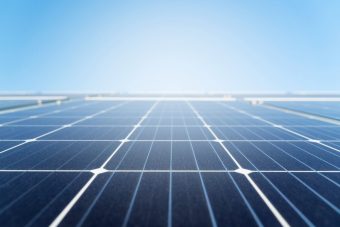
Although solar energy currently available in many countries could meet a significant portion of electricity needs, certain challenges are associated with this energy source. Solar energy is not consistently available. For example, there is more of it during the summer months than needed, while in winter, there is less of it because sunny days are rarer, and the sun sets earlier.
In the case of Switzerland, solar energy could cover more than 40 percent of electricity needs by 2050, but the challenge of its storage remains. Therefore, even though there is a surplus of solar energy in the summer, it cannot be made available in the winter when it is most needed.
As a solution, it is suggested that the excess solar energy produced in the summer be used to generate hydrogen, which would then be stored and used in the winter. The reason for this solution is that hydrogen can be used to produce electricity and heat. However, hydrogen storage presents a challenge of its own. It is highly flammable, easily spreads, and can make materials brittle. Special high-pressure tanks are needed for its storage, and cooling technology, which is expensive and energy-intensive, is also required. Finally, hydrogen has such properties that it can penetrate materials and cause leaks, which can lead to environmental problems and additional costs to stop the leaks.
Researchers at the Swiss Federal Institute of Technology (ETH) in Zurich, led by Wendelin Stark, a professor of functional materials at the Department of Chemistry and Applied Biosystems, have developed a new technology for seasonal hydrogen storage that is much safer and cheaper than existing solutions. It involves the use of the fourth most abundant element on Earth – iron, as well as the steam-iron process, known since the 19th century.
The steam-iron process uses iron to store and release hydrogen, allowing for efficient energy storage. When there is excess solar energy in the summer, it is used to electrolyze water and produce hydrogen. This hydrogen is introduced into a reactor filled with iron oxide. There, hydrogen reacts with iron oxide, removing oxygen and leaving elemental iron and water. In this way, the energy from hydrogen is stored in the form of iron.
More:
- Producing Hydrogen from Iron-Rich Rocks without Emitting Carbon Dioxide?
- Morocco’s Big Green Hydrogen Potential – Can the Country Become a Major Player in the Transition to Sustainable Fuel?
- New Analysis Reveals European Solar Battery Storage Market Increased by 94 per cent in 2023
During winter, when there is a need for energy, the process is reversed. Steam is introduced into the reactor and reacts with iron, converting it back into iron oxide, while releasing hydrogen. This hydrogen can then be used to produce electricity or heat.
The advantage of this process is that it uses a cheap and readily available material, iron, and allows long-term energy storage with minimal losses. Although the process is not perfectly efficient, it represents an innovative way to use solar energy during the winter.

“This chemical process is similar to charging a battery. It means that the energy in hydrogen can be stored as iron and water over long periods with almost no losses,” the researchers explain.
They further explain that the reactor in which the reaction occurs does not need to meet special safety requirements. It consists of walls made of stainless steel only six millimeters thick, and the reaction takes place at normal pressure, while the storage capacity increases with each cycle.
However, the main drawback of using hydrogen remains its low efficiency, as up to 60 percent of energy is lost during production and conversion. This means that hydrogen is attractive as an energy storage medium only when wind or solar energy surpluses are available, and when other options are not feasible.
A pilot plant on the Hönggerberg campus, one of ETH’s two main campuses, already demonstrates the technical feasibility of this technology, with plans to cover one-fifth of the campus’s winter energy needs by 2026 using hydrogen stored from solar energy collected in the summer.

